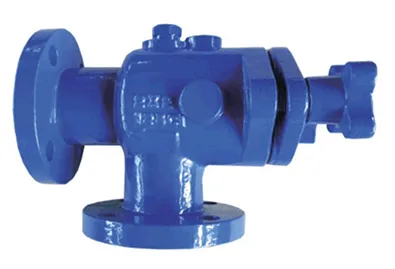12 月 . 06, 2024 17:03 Back to list
strainer
The Importance of Strainers in Everyday Life
Strainers are often overlooked kitchen tools that play a pivotal role in various culinary tasks. From draining pasta to rinsing vegetables, these simple devices are essential for ensuring that food is prepared correctly and safely. While they might seem like mundane items, strainers come in various shapes, sizes, and materials, each designed to cater to specific functions. In this article, we will explore the different types of strainers, their uses, and why they are indispensable in both professional kitchens and homes.
Types of Strainers
There are several types of strainers, each serving a unique purpose. The most common type is the mesh strainer. This tool features a fine mesh that allows liquids to pass through while trapping solid particles. Mesh strainers are ideal for tasks such as rinsing rice, draining boiled pasta, or straining stocks to achieve a clear broth. The fine mesh prevents even the smallest particles from escaping, ensuring a smooth end product.
Another widely used strainer is the colander. Typically made of perforated metal or plastic, colanders are larger than mesh strainers and are perfect for draining large quantities of food. They are commonly used for pasta, but can also be employed for washing fruits and vegetables. The larger holes allow for quick drainage, making them a favorite among cooks who need to prepare meals swiftly.
The fine sieve is another variant, similar to a mesh strainer but featuring an even finer mesh material. This type of strainer is perfect for tasks requiring utmost precision, such as sifting flour or straining sauces to remove pulp and seeds. Fine sieves are essential for creating smooth, elegant textures in various dishes and are a staple in professional kitchens.
In addition to these, there are specialized strainers like the chinois
. With its conical shape and ultra-fine mesh, a chinois is perfect for creating ultra-smooth sauces and soups. It is often used in gourmet cooking, where texture is as important as flavor. While it may not be a staple in every home kitchen, it exemplifies how strainers can vary significantly in design and application.strainer

The Role of Strainers in Cooking
Strainers serve more than just a functional purpose; they also enhance the culinary experience. For instance, proper straining can elevate the quality of a dish. When making sauces, a fine strain guarantees that no unwanted bits or grainy textures detract from the experience. Similarly, when preparing soups, using a strainer preserves clarity, allowing the aesthetics of the dish to shine through.
Moreover, strainers contribute to food safety. When rinsing vegetables, a mesh strainer ensures that dirt and pesticides are thoroughly washed away, making the food safe for consumption. This aspect of strainers is crucial, especially as more people become conscious of their dietary choices and the importance of consuming washed produce.
Additionally, the efficiency of strainers cannot be overstated. In a fast-paced cooking environment, such as a restaurant kitchen, time is of the essence. Strainers allow chefs to execute multiple tasks simultaneously, saving valuable time and energy. They facilitate quick clean-up, as rinsing and draining can often be done directly over the sink, minimizing mess.
Conclusion
In conclusion, strainers are essential tools that should not be underestimated. Their various types cater to a multitude of culinary needs, enhancing both the quality and safety of food preparation. Whether in a professional kitchen or a home setting, strainers facilitate efficiency and precision in cooking.
Understanding the importance of these humble kitchen tools allows us to appreciate the intricacies involved in food preparation. Next time you drain pasta or rinse beans, take a moment to recognize the vital role that strainers play in transforming raw ingredients into delicious meals. Far from being trivial, they are indeed a testament to the art and science of cooking, bridging the gap between simplicity and sophistication.
Share
-
Understanding the Differences Between Wafer Type Butterfly Valve and Lugged Butterfly ValveNewsOct.25,2024
-
The Efficiency of Wafer Type Butterfly Valve and Lugged Butterfly ValveNewsOct.25,2024
-
The Ultimate Guide to Industrial Swing Check Valve: Performance, Installation, and MaintenanceNewsOct.25,2024
-
Superior Performance with Industrial Swing Check Valve: The Essential Valve for Any SystemNewsOct.25,2024
-
Industrial Swing Check Valve: The Ideal Solution for Flow ControlNewsOct.25,2024
-
You Need to Know About Industrial Swing Check Valve: Functionality, Scope, and PerformanceNewsOct.25,2024